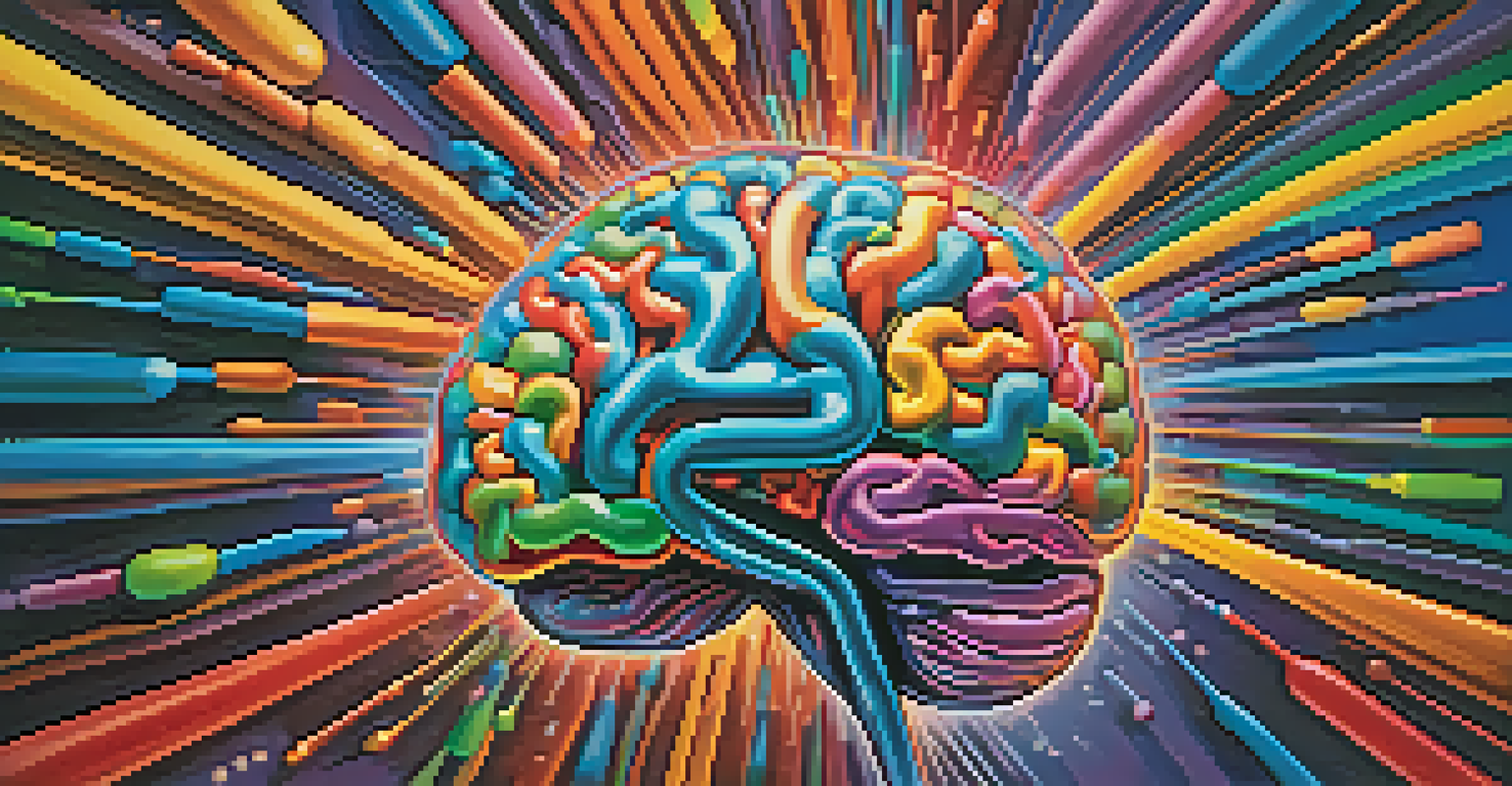Exploring the Neurotransmitter Effects of Mescaline on the Brain

What is Mescaline and Its Historical Context
Mescaline is a naturally occurring psychedelic compound found in several cacti, most notably the peyote cactus. Historically, it has been used in various indigenous cultures for spiritual and healing purposes. These traditions highlight the significance of mescaline beyond mere recreational use, showcasing its role in rituals and community bonding.
Psychedelics can help us to understand our own minds and the world around us in new and profound ways.
In modern times, mescaline has gained attention in the context of psychological studies and therapeutic practices. Researchers are exploring its potential benefits for conditions like depression, anxiety, and PTSD. Understanding its effects on the brain's neurotransmitters could pave the way for innovative treatments.
While mescaline may be celebrated for its psychoactive properties, it's essential to approach it with caution. Like any powerful substance, it can lead to profound experiences, both positive and negative. This duality makes it a fascinating subject of study in neuroscience.
How Mescaline Interacts with Neurotransmitters
Mescaline primarily affects neurotransmitters, which are chemical messengers in the brain. The compound is known to mimic serotonin, a neurotransmitter that plays a key role in mood regulation and perception. By binding to serotonin receptors, mescaline can produce altered states of consciousness and vivid hallucinations.

This interaction with serotonin is similar to other psychedelics, but mescaline has a unique profile that sets it apart. For instance, it may affect specific serotonin receptor subtypes more pronouncedly, leading to its distinctive effects. This specificity could provide insights into how different psychedelics can lead to varied experiences.
Mescaline's Historical Significance
Mescaline has been used for spiritual and healing purposes in various indigenous cultures, highlighting its importance beyond recreational use.
Moreover, the way mescaline alters neurotransmitter activity can lead to changes in perception, mood, and cognition. Users often report feelings of interconnectedness, enhanced creativity, and profound insights into their lives. These experiences highlight the potential of mescaline as a tool for personal exploration and understanding.
Neurotransmitter Systems Affected by Mescaline
In addition to serotonin, mescaline also influences other neurotransmitter systems, including dopamine and norepinephrine. Dopamine is often associated with the brain's reward pathways and is crucial for motivation and pleasure. Mescaline's interaction with dopamine can enhance feelings of euphoria and well-being.
The use of psychedelics can lead to a greater understanding of our connection to the universe and to each other.
The involvement of norepinephrine, a neurotransmitter linked to the body's stress response, can lead to heightened arousal and alertness during a mescaline experience. This can create a sense of urgency or intensity in the emotional responses of the user. Understanding these interactions can help researchers grasp the full spectrum of mescaline's effects.
By examining how mescaline interacts with these neurotransmitter systems, scientists can better understand its potential therapeutic applications. For example, harnessing these effects might contribute to treatments for depression or anxiety disorders, where neurotransmitter imbalances play a significant role.
The Brain Regions Impacted by Mescaline
Mescaline's effects are not limited to neurotransmitter interaction; it also influences various brain regions. Key areas impacted include the prefrontal cortex, which is responsible for decision-making and social behavior, and the visual cortex, which processes visual information. This can lead to the striking visual hallucinations often reported by users.
The default mode network (DMN), a network associated with self-referential thoughts and daydreaming, also shows altered activity during mescaline experiences. This disruption in the DMN may contribute to feelings of ego dissolution and a sense of interconnectedness with the universe. Such experiences can lead to profound personal insights.
Therapeutic Potential of Mescaline
Research is exploring mescaline's potential benefits for mental health conditions like depression and anxiety, showcasing its promising therapeutic applications.
Understanding which brain regions are activated or suppressed during mescaline use helps researchers map its effects more accurately. This knowledge can guide future studies aimed at exploring its therapeutic potential, especially in treating mental health conditions.
Positive Effects of Mescaline on Mental Health
Research suggests that mescaline may offer several positive effects on mental health. Users often report enhanced creativity, emotional catharsis, and a greater sense of purpose following experiences with the substance. These outcomes can be particularly beneficial for individuals seeking therapeutic avenues for personal growth.
Furthermore, mescaline has been shown to foster feelings of empathy and connectedness, which can improve interpersonal relationships. This sense of unity and understanding may help individuals process trauma and develop healthier coping mechanisms. Such effects present an exciting area of exploration for mental health professionals.
As interest in psychedelics grows, mescaline is gaining recognition as a potential tool for therapy. Ongoing studies aim to establish its efficacy in treating various psychological disorders, providing hope for many seeking alternative treatments.
Potential Risks and Side Effects of Mescaline
Despite its potential benefits, mescaline is not without risks. Some users may experience anxiety, paranoia, or overwhelming emotions during their trips. These adverse effects can be particularly pronounced in individuals with a history of mental health issues, making careful screening essential before use.
Additionally, the intense experiences induced by mescaline can lead to psychological distress. It’s crucial for users to approach its use in a safe and controlled environment, ideally under the guidance of a trained professional. This awareness can help mitigate potential negative experiences and enhance the overall journey.
Risks and Safe Use of Mescaline
While mescaline offers potential benefits, it also carries risks such as anxiety and paranoia, necessitating careful screening and controlled environments for use.
Understanding the risks associated with mescaline is vital for anyone considering its use. Educating individuals about possible side effects can empower them to make informed decisions and seek the support they need, ensuring a safer exploration of this powerful substance.
The Future of Mescaline Research and Its Implications
The future of mescaline research is promising, as scientists continue to explore its effects on the brain and potential therapeutic applications. With a growing acceptance of psychedelics in the scientific community, mescaline is poised to be at the forefront of innovative treatments for mental health disorders. Ongoing studies aim to clarify its mechanisms and establish guidelines for safe use.
As researchers delve deeper into mescaline's interactions with neurotransmitters and brain structures, they may uncover novel insights that could revolutionize mental health treatment. Such advancements could lead to the development of new therapeutic protocols, integrating mescaline into psychotherapy practices.

Ultimately, understanding mescaline's profound effects on the brain could reshape how we view mental health treatment. By recognizing its potential while also respecting its risks, society can work towards harnessing its benefits responsibly and effectively.